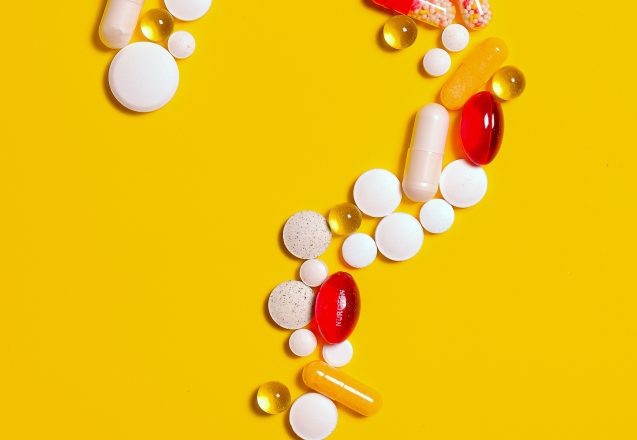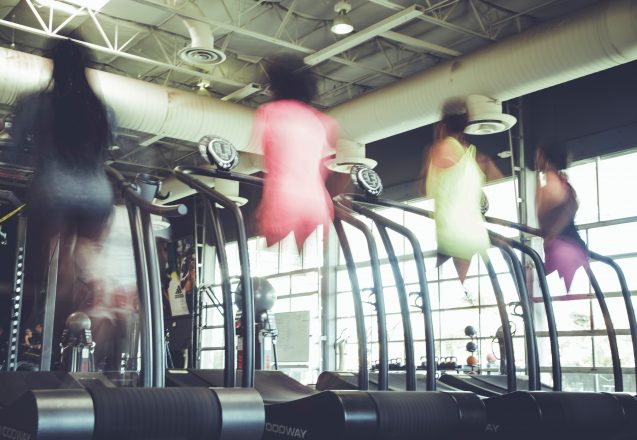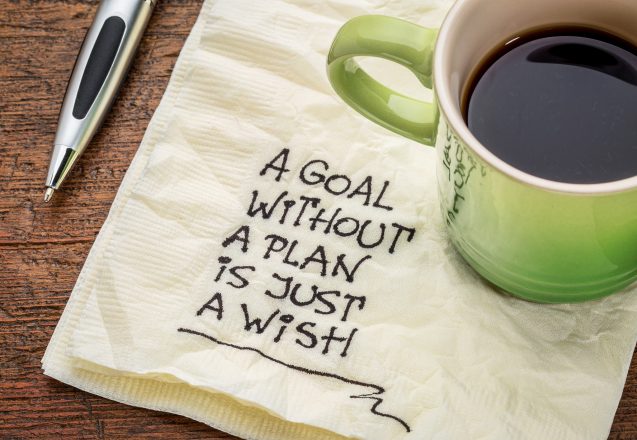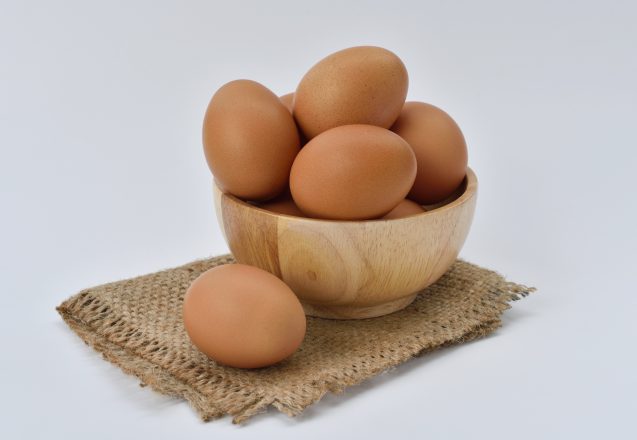Don’t Be Afraid Of Intermittent Fasting
 If you’ve been hearing about intermittent fasting—IF—as a technique for weight loss and think it’s one of the latest diet fads, think again. It’s not new. In fact, it’s been around for quite a while and used as part of religious ceremonies, then to help control epilepsy before medications were created. Early man fasted periodically, sometimes longer periods when food was scarce. The body was meant to fast for short periods. In fact, some intermittent fasting isn’t longer than a day. It simply means you eat within a 6-8 hour window and fast the rest of the time. Other types, require fasting for a day or two.
If you’ve been hearing about intermittent fasting—IF—as a technique for weight loss and think it’s one of the latest diet fads, think again. It’s not new. In fact, it’s been around for quite a while and used as part of religious ceremonies, then to help control epilepsy before medications were created. Early man fasted periodically, sometimes longer periods when food was scarce. The body was meant to fast for short periods. In fact, some intermittent fasting isn’t longer than a day. It simply means you eat within a 6-8 hour window and fast the rest of the time. Other types, require fasting for a day or two.
Most people actually get healthier when they do IF.
There have been studies on the effect of fasting since the 1930s. One animal study divided mice into three groups. One group ate just once a day. The second group had a 30% calorie restriction and was fed twice a day, while the last group ate on demand. The mice that fasted and ate once a day not only lived longer, they aged slower than those in the other two groups. They remained more active and looked more youthful. They lived 28% longer than the group that ate on demand, while the calorie restricted group only lived 11% longer than that group.
Weight loss seems imminent, since you eat within a narrower window or skip a day.
Narrowing your window of eating means you won’t have as much time to eat and you’ll be fuller most of that time. That means you’ll eat fewer calories. If you start eating at 11am and finish at 7pm—8 hours—there’s less time to overindulge. If you have insomnia, are pregnant, lactating, take medication that requires food previously, have digestive issues or a compromised immune system, always check with your health care professional first. Fasting may not be for you, even intermittent fasting.
You’ll get other benefits from IF.
You might look years younger when you do IF. That’s because the fasting helps you shed extra pounds, particularly around your mid-section. It increases insulin sensitivity and human growth hormone. It also helps boost your metabolic rate, while reducing one of the major causes of disease, inflammation. It also gives the body a chance to do cellular repair and remove waste, a process known as autophagy. Once old cells are removed, the body replaces them with new ones. This isn’t done during short fasting periods, but requires at least 24 hours, so it requires alternate days of fasting. IF also improves concentration and brain health, while lowering the risk of cancer.
- One caution about IF. During those times you eat, make sure you eat healthy. While timing is important, so is adequate nutrition. Don’t feast on junk food but make the food you eat healthy.
- Recent studies looked at the effect of IF while on a keto diet. It found that it increases fat burning and reduced the amount of time for ketosis that leads to maximum weight loss.
- One reason IF works is that it’s relatively easy to do. Simply restricting the amount of time when you eat and using a healthy diet means you’ll eat fewer calories for that day. It also improves metabolism.
- An animal study showed that fasting caused the body to produce a molecule beta-hydroxybutyrate. It helped reverse vascular aging and caused the blood vessels to build more cells that line the interior.
For more information, contact us today at UpFit Training Academy
Does Alcohol Make Me Gain Weight?
 Do you enjoy a few drinks after work each day, but find that your waistline is getting bigger? That’s because alcohol can make you gain weight. That’s right. Even if drinking a couple of glasses of wine daily has been shown to be heart healthy, it doesn’t mean it doesn’t have other consequences. It’s especially bad if you’re trying to lose weight, since not only the food you eat, but the calories you get from what you drink can add pounds. It has other health consequences, too, such as an increased risk of liver disease or diabetes.
Do you enjoy a few drinks after work each day, but find that your waistline is getting bigger? That’s because alcohol can make you gain weight. That’s right. Even if drinking a couple of glasses of wine daily has been shown to be heart healthy, it doesn’t mean it doesn’t have other consequences. It’s especially bad if you’re trying to lose weight, since not only the food you eat, but the calories you get from what you drink can add pounds. It has other health consequences, too, such as an increased risk of liver disease or diabetes.
Even though it may cause weight gain and have other negative effects, drinking moderately may have benefits.
It’s all about moderation. For instance, moderate alcohol consumption may reduce the risk of Alzheimer’s or other types of dementia. One research study found that people who drank in moderation were less prone to it than those who never drank alcohol. Alcohol reduces the blood thickness and improves HDL—healthy cholesterol—levels. Those both help reduce the potential of dementia. Moderate intake of wine and beer may also boost the immune system. Wine is often cited as being heart healthy. However, nowhere, has science ever found it helped healthy weight loss.
Alcoholic beverages add calories without providing benefits.
While you might get a few vitamins from umbrella drinks that contain fruit, those drinks normally also have lots of sugar. The calories from the sugar are stored, since the body uses the calories from alcohol immediately. They can’t be stored. For women who haven’t passed menopause, it simply means you’ll add more pounds, but for those past menopause, the oestrogen levels drop, which causes the excess weight to form around the mid-section as belly fat.
Fat burning slows when you drink alcohol.
As noted before, the body uses the calories from alcohol first. It impairs the way glucagon works. Glucagon elevates glucose levels and breaks down fat. It all goes back to how the body sees alcohol. It doesn’t view it as a drink, but rather a poison and the liver works hard to rid the body of poison. While the liver is trying to rid the body of the alcohol, it can’t do its other tasks, so breaking down fat doesn’t occur. It also causes blood glucose levels to drop, leaving you feeling ravenous. Everything looks good and you tend to overeat. Not only does alcohol stop fat burning, it stimulates your appetite.
- If you’re trying to build muscle, avoid alcoholic drinks. It reduces testosterone levels that help with muscle gain. Lower testosterone levels directly and indirectly affect how much weight you lose.
- One study shows that a simple drink before dinner can stimulate your appetite, so you eat more. One study compared those who had an alcoholic beverage to those who had a soft drink and the ones who drank alcohol ate far more.
- Each gram of alcohol is high in calories. It has twice the calories of protein and more than most carbs. A gram of fat has 9 calories with alcohol coming in close at 7. However, fat makes you feel full and is important for bodily functions, which includes burning fat.
- The spike in the insulin level caused by alcoholic drinks can increase the potential for more than just weight gain. It can increase the potential for insulin resistance. While you can still lose weight and drink moderately, it is harder to do.
For more information, contact us today at UpFit Training Academy
How To Lose Body Fat And Retain Muscle Mass
 Most people want to lose body fat, while they also retain muscle mass or even build more muscle mass. It’s not a pipe dream but is hard to do if you’re not using the right exercise techniques and have adequate nutritional guidance. The fat/muscle composition of your body not only affects how you look, it also makes a difference in how quickly you lose weight. If you want a six-pack or the muscular look, you need to do both, lose fat and gain muscle.
Most people want to lose body fat, while they also retain muscle mass or even build more muscle mass. It’s not a pipe dream but is hard to do if you’re not using the right exercise techniques and have adequate nutritional guidance. The fat/muscle composition of your body not only affects how you look, it also makes a difference in how quickly you lose weight. If you want a six-pack or the muscular look, you need to do both, lose fat and gain muscle.
No matter how much exercise you do, if there’s a layer of fat, your efforts won’t show.
Some people have a six-pack and a chiseled appearance, but it’s hidden under a layer of fat. How do you lose that fat without losing the muscle tone? Start by looking at your workout program. If you’re doing primarily cardio, you’ll be burning both lean muscle mass and fat, which is counterproductive. That can actually slow your efforts to burn fat, since muscle tissue requires more calories for maintenance than fat tissue does. Complex strength building exercises will build or retain your muscle tissue, while also burning fat.
Your diet is extremely important.
Great bodies start in the kitchen. If you’re not eating clean and don’t have a nutritious menu, you’ll make it harder to build muscle, retain muscle or shed fat. You need to include approximately 1.5 grams of protein for every pound of body weight. Healthy fat is also important in your diet. It’s essential for burning fat in your body. It should be approximately 15-20% of your total calorie intake.
If you’re tracking your calorie intake and trying to build muscle, eat approximately 500 fewer calories a day.
We focus on healthy eating and that means lowering calorie intake slowly, not a crash diet. If you’re trying to build muscles, reduce your calorie intake by approximately 500 calories a day. It takes energy to build lean muscle tissue. Healthy eating does that naturally. If you’re doing tough strength training, your reduction needs to be minimal or not at all.
- Just cutting calories without exercise won’t give you the look you want. You may look heavier, even if you’ve lost weight. The body of someone muscular looks slimmer than the body of someone that’s not muscular who weighs the same.
- Complex strength building exercises work several muscles and joints at the same time, so they burn more calories while building muscle tissue. We use the latest scientific techniques to help you lose fat, while you build muscle.
- When you want to lose fat, not muscle, make sure you get adequate sleep. Lack of sleep can cause an imbalance in the hunger/satiety hormone, so you’ll be prone to eat more and too tired to workout as hard as you should.
- Make sure you give your body a chance to heal the muscle tissue. Don’t do strenuous strength building exercises every day. Not giving adequate recovery time can cause you to lose muscle mass and hurt your progress.
For more information, contact us today at UpFit Training Academy
Getting Started With Running
 If you’re like many people, you may want to find ways to supplement your time at the gym on the days you don’t go. Some people find that biking, walking or running are good ways to do that. Adding more activity that isn’t intense can keep you healthier and provide active recovery if you’ve had a tough workout the day earlier. There are some things to remember if you use running as your alternate exercise program.
If you’re like many people, you may want to find ways to supplement your time at the gym on the days you don’t go. Some people find that biking, walking or running are good ways to do that. Adding more activity that isn’t intense can keep you healthier and provide active recovery if you’ve had a tough workout the day earlier. There are some things to remember if you use running as your alternate exercise program.
What you wear does count.
Wearing the right type of clothing for weather conditions is a top priority. Your clothing doesn’t have to be the latest fashion, but it does have to suit the weather and allow easy movement. Your shoes are important. They should be supportive and designed for the terrain you’ll run. There’s a lot of difference between running on a treadmill, running on gravel, at a track or on hilly, woodsy terrain. Get the type of shoes based on where you run. Shoes to run on trails is far different than those used to run on asphalt.
If you’re running outside, let someone know where you’re running and plan to make it safe.
Always make sure someone knows where you’re running if you’re taking a route outside, just in case something happens. It’s even better if you take a cell phone and use an app that allows your cell phone to be tracked. Wear clothing that keeps you safer, like reflective clothing after dark and running with a buddy if possible. Make sure you carry extra water or plan your route based on public fountains or places to stop for water, especially on hot days. Always warm up before you run and cool down when you’ve finished.
Learning proper breathing techniques will help you with running and all types of exercise.
Learning the proper technique when you breathe is important for success in running. Breathing in through the nose and out through the mouth is one of the easier techniques but should be practiced before you run or jog. Learn belly breathing to ensure your nasal breaths are deeper. Blow out your breath as deeply as you can, using the diaphragm.
- Most people aren’t aware which running shoes are best for various conditions. Get the help of the staff at the store that knows the difference.
- Just like any exercise, don’t try to overdo it. Start with a gentle run or even a walk. The exercise is meant for active recovery. Don’t make it too intense, especially when you first start.
- You need to keep hydrated. One general rule is to drink a half to three quarters cup of water every 20 minutes you run. If you’re pushing yourself to run faster, you’ll need to increase that amount.
- Make sure your posture is good when you run. Your head should be held high, back extended so you run “tall.” Your shoulders should be up, yet relaxed. Maintain a neutral position, focusing your eyes 10 to 20 feet out in front of you.
For more information, contact us today at UpFit Training Academy
Is It Important To Time Your Workouts?
 At Upfit Training Academy in New York, NY, we provide a program that’s scientifically based so you get the success you deserve. One of the many things that makes our small group workouts so effective is the timing. Unlike traditional gyms, you’re working hard for the full time. If you’ve ever worked out on your own, you know that there’s a lot of time wasted. When you time your workouts and have a specific schedule, you’ll get more benefit in far less time.
At Upfit Training Academy in New York, NY, we provide a program that’s scientifically based so you get the success you deserve. One of the many things that makes our small group workouts so effective is the timing. Unlike traditional gyms, you’re working hard for the full time. If you’ve ever worked out on your own, you know that there’s a lot of time wasted. When you time your workouts and have a specific schedule, you’ll get more benefit in far less time.
Some people workout far too long.
Maybe you don’t waste time, maybe you just “live” at the gym. Did you know that you can overwork your body, especially when you’re first starting a program of exercise or are doing intense strength training? Your muscles require time to heal and pushing yourself too hard for too long can actually cause a setback in your efforts to get fit. Pushing your body too hard in one session can cause injury that can set you back for weeks and lower your immune response for up to 72 hours.
Being accountable for the actual minutes of exercise can make you work harder and smarter.
Taking breaks between sets not only slows you down, it’s deceiving. If you’re working out for 45 minutes with minimum rest between exercises, you’re taking advantage of the whole exercise time. When you take long breaks between sets, only exercising half the time, that same 45 minutes isn’t as productive. When doing a specific routine, it takes longer than it should, wasting time and leading you to believe you’re working harder when you’re not.
Timing your exercise also means sticking with a schedule.
People who schedule their workouts normally time them, for good reasons. They often schedule the rest of their day, too. That helps build a habit that makes sticking with a program easier. Timing your exercise can also mean finding the best time to workout based on your body and your schedule, so you maximize benefits. There’s no one right answer for everyone. Hormone levels are higher in the morning, so when you exercise, you’ll burn more fat and start your day off right. In the mid-day or at lunch hour, the body’s energy levels tend to be higher. When you workout at the end of the day, you’re burning off the stress of the day and winding down for a relaxing evening.
- You need a minimum of 150 minutes of moderate exercise or 75 minutes of intense exercise each week. If you’re tracking your time, also note how much intensity it entailed.
- If you’re spending too much time working out, there are signs it’s affecting your body. These include a suppressed immune system and more frequent illness, mood swings, excessive fatigue and exhaustion doing normal everyday tasks.
- If you’re timing your workout, only track the actual minutes you’re exercising. If you’re working out on your own, you’ll be surprised at how little you actually exercise compared to how long it took you.
- At Upfit, we create programs designed to help you maximize the benefits in the shortest amount of time. It’s science based to give you the best results possible.
For more information, contact us today at UpFit Training Academy
How To Set Healthy Fitness Goals
 Reaching a fitness goal that makes you feel more energetic, look great and be healthier, but before you can reach a healthy fitness goal, you have to set healthy fitness goals. The goals must be realistic. No matter how hard you try, if you’re 5’8″, you’ll never naturally attain the goal of being 6’5″. Losing 100 pounds in two weeks is also not an attainable or healthy goal. Focus on setting goals that are realistic, but also make sure those goals follow other steps that make them attainable.
Reaching a fitness goal that makes you feel more energetic, look great and be healthier, but before you can reach a healthy fitness goal, you have to set healthy fitness goals. The goals must be realistic. No matter how hard you try, if you’re 5’8″, you’ll never naturally attain the goal of being 6’5″. Losing 100 pounds in two weeks is also not an attainable or healthy goal. Focus on setting goals that are realistic, but also make sure those goals follow other steps that make them attainable.
Is your goal specific?
Why is that important? Let’s look at two goals. The first is “I want to lose weight” and the second is “I want to lose 20 pounds.” For the first goal, if you lose a pound does that mean you’ve reached your goal? When a goal is specific, you know when you’ve attained it. You can break it down to mini goals, such as “I will lose two pounds a week for ten weeks to reach my 20 pound weight loss goal.” You then can identify the steps you’ll take to reach the mini goals.
Can you measure your goal?
A healthy goal has to be measurable. How will you know if you get healthier? In the previous example, the person measures their achievement by the specific amount of weight to lose? Identify exactly what you want to achieve. If lowering blood pressure or blood sugar levels is a goal, then use that in setting your goal. “I will lower my Systolic blood pressure by ten points by eating a healthy diet and exercising three times a week.”
Your goal should be relevant and time-bound.
If you aren’t interested in achieving a specific goal, but a friend or spouse thought you should, such as lose ten pounds, it’s not relevant to you. You also have to set a time frame to achieve that goal. How many people remember pulling all-nighters because of a test the next day. That test made that date important and even though you didn’t bother learning the information along the way, learning it became important because it was time-bound. The same is true of any goal, unless you set a deadline, there’s always tomorrow.
- Tracking your goals and keeping record of your progress is also important. It helps you identify what works and what doesn’t, plus allows you to go back and see how much you’ve achieved.
- Even though you do your best, at one time or another, you may have a set back, whether it’s skipping a workout session or eating a pint of ice cream. Forgive yourself and get back on track. You achieve nothing with self-condemnation. Be your own best cheerleader.
- Goals can be changed. You can make adjustments if it’s too hard or too easy. If there end up things out of your control, change the goal to control those things you can control.
- Setting and tracking your goals keep them in the forefront. They help you get results and stick with a program. Write down your goals and hone them. If they’re big, break them down to smaller goals so you have more immediate success and stay motivated.
For more information, contact us today at UpFit Training Academy
What You Didn’t Know About OTC Vitamins
 If you feel like you’re missing something important if you don’t take your chewable over-the-counter—OTC—vitamins, maybe you should reconsider. Are OTC vitamins really that beneficial or have you been bamboozled by years manufacturers propaganda. Can OTC vitamins be dangerous? Did you know that every year Americans spend approximately $12 million on vitamin and mineral supplements? It’s big business, but are there good reasons for taking OTC vitamins?
If you feel like you’re missing something important if you don’t take your chewable over-the-counter—OTC—vitamins, maybe you should reconsider. Are OTC vitamins really that beneficial or have you been bamboozled by years manufacturers propaganda. Can OTC vitamins be dangerous? Did you know that every year Americans spend approximately $12 million on vitamin and mineral supplements? It’s big business, but are there good reasons for taking OTC vitamins?
Recent studies show those supplements may not help.
John Hopkins focused on three recent studies that found that supplements weren’t that beneficial. These were large studies with the largest including 450K people. It noted that daily multivitamins did not reduce the risk for the potential for heart disease or cancer. Another study found the same after studying a smaller group. The third study looked at whether multi-vitamins reduced the potential for mental decline or memory loss. After studying 5947 people for 12-years, the answer was no.
Some supplements may cause more problems than they help.
Most of the problem occurs when people take high doses of specific vitamins, such as the vitamin A predecessor beta-carotene or vitamins C or E. Studies show that people who smoke increase the risk of lung cancer if they take beta-carotene. High doses of vitamin E can also increase the risk of strokes. If you’ve ever taken too much vitamin C, you’ll understand that an excess can cause stomach problems or diarrhea. If you’re a senior, you may want to avoid calcium supplements and opt for weight bearing exercise instead. Studies show that supplementing calcium may cause it to build up in the artery walls.
Many OTC vitamins aren’t bioavailable.
No matter how many multi-vitamins you take, if your body can’t process them or absorb the nutrients, they’re useless. Just because the pill contains a specific amount of the nutrient, it doesn’t mean that it’s what will ultimately end up in your body. There are several factors that determine that. If it doesn’t dissolve or degrade in a timely fashion, you’ll find the vitamin in your waste. The type of inert materials, inhibitors and the nutrient form also makes a difference. The drugs you take, when you take the vitamin and your body’s needs also play a role. If you take more vitamin C than you need, you’ll end up with it in your urine, which is costly.
- Focusing on a healthy diet is the most important change you can make. Many nutrients aren’t vitamins or minerals, but phytonutrients that work in synergy with them to provide the more robust benefits. Anthocyanin, the phytonutrient that makes blueberries blue, is one example.
- Unless you spend a significant amount on the vitamin and do thorough research, you may be getting a form of the vitamin that isn’t bioavailable, meaning your body can’t break it down, absorb it or use it.
- Not all vitamins are bad for all people. Most people don’t get adequate sun, so they lack vitamin D, which is difficult to get unless you eat fortified food.
- Popping a vitamin may give you a false sense of security, which can lead to a poor diet and eating habits. Focus more on eating healthy and save your money for healthier options for your dinner table.
For more information, contact us today at UpFit Training Academy
How To Find The Right Gym For You
 In New York, NY, there are several options from which to chose if you’re looking for a gym. How do you find the right gym for you? It can be confusing. You first need to look at what they offer. Do they provide personalized training or are they just a room with equipment? Do they offer help with nutritional needs or is it all about exercise? Do they provide a variety of option that fit your budget, including online options? If you’re comfortable creating your own program, you’ll want a different type of gym than someone who wants help getting the fastest results. If all you want is a place to workout, you’ll want a different gym than someone who wants to change their lifestyle and live healthier.
In New York, NY, there are several options from which to chose if you’re looking for a gym. How do you find the right gym for you? It can be confusing. You first need to look at what they offer. Do they provide personalized training or are they just a room with equipment? Do they offer help with nutritional needs or is it all about exercise? Do they provide a variety of option that fit your budget, including online options? If you’re comfortable creating your own program, you’ll want a different type of gym than someone who wants help getting the fastest results. If all you want is a place to workout, you’ll want a different gym than someone who wants to change their lifestyle and live healthier.
Does the gym provide options, like group training or on-the-road training?
In order to benefit from a gym, you have to go to the gym. That’s the case with most gyms, but if you’re continuously traveling, it can be hard to do. A great gym considers your lifestyle and needs. It may offer group training to make it more affordable or have options like online training for those times you can physically make it to the gym. The right gym for you fills your needs.
Does the gym use science backed methods?
Finding a gym that provides the help you need using the latest scientific methods is important. Science isn’t static and things change continuously. Finding a gym that offers trainers who are abreast of the latest information on fitness from the scientific world is important. Every year science is finding techniques and information that can help you reach your goals faster and live healthier.
Find a gym that helps motivate you and holds you accountable.
Being held accountable is one of the most valuable assets possible. When people know that others are watching and tracking their progress, they’re more apt to stick with a program than when they’re working out on their own with no accountability. In order to be accountable and know if you’ve made progress, the trainer must first assess your present level of fitness, learn your special needs and what your goal is. The best type of gym learns about you first, before any recommendations are made.
- While the latest scientific techniques are important, so is experience. Look for a gym that has trainers with years of experience and know what works best with clients.
- Take time to learn more about the gym before you select an option. Look for success stories and ask questions. Many gyms have websites and provide a way to speak with someone immediately to answer any questions. Take advantage of that.
- Visit the gym. See if it meets your expectations. Is it clean? Is the focus on benefiting clients? Is there goal one of teaching you how to be your healthiest, so ultimately you can direct your own program?
- Do you feel like you’re part of your own program and part of the team. Feeling comfortable and accepted is also an important part of any fitness program. It motivates you to continue.
For more information, contact us today at UpFit Training Academy
Set Some Health Goals

a goal without a plan is just a wish – motivational handwriting on a napkin with a cup of coffee
We’re finally getting back to somewhat normal in New York, NY, and it’s time to start thinking about the future. Many people have focused on financial goals and refined them, with new steps to take for their future, but there’s more to be done. Setting health goals is just as important as financial goals. No matter how much money you have, if your health is poor, you can’t enjoy the good life. You can change your health outlook starting now, by taking the time to set some goals.
Your goal may sound big, but you can break it down to smaller goals.
Do you want to run in a marathon, but haven’t done anything more physical than getting up to find the remote? Would you like to get back into shape, but the sound of losing 40 pounds and building muscles sounds too difficult? You need to break those big goals down to smaller ones and take it one step at a time. If you can’t run a mile, run as far as you can, even if it’s just to the end of the driveway or to the end of the block. Make it your goal to run more each day. Big goals are accomplished by breaking down the big goals into smaller goals and achieving them first.
Give yourself a specific time frame.
If you set a goal, that’s great, but you also have to determine a specific amount of time to achieve that goal or it simply becomes a “some day” pipe dream. Many people have things they’ve always wanted to do, but never gave themselves a deadline to achieve it. If you’ve set a goal and broken it down to mini-goals, you need to give each mini-goal a deadline. Make it something that can be achieved in a week or a month so you can be successful quickly and have the motivation to continue.
Make the goal specific and measurable.
I will become healthier or fitter is a good desire, but it’s not a specific goal. I will lose ten pounds by X date or I will be able to run a full mile by X date are goals. You have a way to measure the goals, a specific date for achievement. You need something specific. If you just want to feel better, you need to say how you want to feel better. Do you want to have more energy, or maybe less back pain? How will you know when you’ve achieved that goal? You need to be able to measure it and make it specific.
- A big goal may seem unrealistic, but once you break it down to smaller more attainable goals, it looks far more achievable and less intimidating. You also need to give yourself enough time to achieve big goals.
- No matter what type of goal you create, whether it’s about health, finances or something else, it needs to be specific, measurable, attainable, realistic and time bound.
- When you break down a goal into smaller goals, the next step you have to take is to create steps to achieve that goal. Create a workout schedule and stick with it or make meal plans.
- If you need help setting up steps, seek help from a professional. A personal trainer can create a fitness and nutritional program designed specifically for your needs.
For more information, contact us today at Upfit Academy
Top Fat Burning Foods
 One of the dreams often expressed by people trying to lose weigh is to eat everything they want and still lose weight. Almost as though the more food eaten, the more weight lost. It may be the perfect dream, but that doesn’t mean it’s impossible. There are fat burning foods that actually help with weight loss. These are thermogenic foods that increase metabolism or food that requires more calories to digest than they contain. Unfortunately, you can’t live consuming just these foods, they don’t provide all the nutrients you need. You can, however, add them to a well balanced diet to boost your potential for weight loss.
One of the dreams often expressed by people trying to lose weigh is to eat everything they want and still lose weight. Almost as though the more food eaten, the more weight lost. It may be the perfect dream, but that doesn’t mean it’s impossible. There are fat burning foods that actually help with weight loss. These are thermogenic foods that increase metabolism or food that requires more calories to digest than they contain. Unfortunately, you can’t live consuming just these foods, they don’t provide all the nutrients you need. You can, however, add them to a well balanced diet to boost your potential for weight loss.
What’s a thermogenic food.
You probably already include chicken in your diet, since it’s a good source of protein, but did you know that eggs are also a good source and increase thermogenesis. They’re packed with nutrients, which also boost your metabolism and help you lose weight. Since they’re packed with protein, they make you feel full longer. One study showed that the group eating three eggs for breakfast compared those who ate a bagel, reduced the amount of calories consumed throughout the day. It also helped reduce body fat. Eggs also boosted the groups metabolism by as much as 35% for several hours after consumption.
Drink your way to a slimmer you.
Coffee is a metabolism booster, by as much as 13%. Drinking between one to four cups of coffee, depending on the coffee’s strength, can increase metabolism because of the caffeine. Green tea is another fat burning drink. One study showed that it increased the body’s fat burning significantly if consumed before bicycling. It contains some caffeine, but also EGCG, a biochemical that promotes fat burning, particularly belly fat. Don’t forget drinking water. According to studies, drinking more water can help you lose weight, particularly if it’s icy cold water or you drink a glass before a meal.
Some types of oil can help you burn fat.
Olive oil, coconut oil, flaxseed oil, blackseed oils and others can help you burn fat. These healthy oils boost your metabolism and help cut your appetite by making you feel fuller longer. Each type of oil has a different twist in how it helps. Flaxseed and fish oil, for instance, contain omega-3 fatty acids to help digestion and prevent insulin spikes that can cause belly fat. Both help suppress appetite and make digestion better. Both increase thermogenesis, just as coconut oil does. While each type of oil may work differently, they all get similar results.
- Want a real fat burner that will burn your mouth, too? Try eating more chili peppers. The capsaicin in peppers that makes it hot, also makes you feel fuller longer and boosts your metabolism.
- Apple cider vinegar is the naturalists medicine in a bottle, but did you also know it can help improve blood sugar levels and burn belly fat? One teaspoon in an 8-oz glass of water in the morning is the starter formula.
- Avoid fat free options and stick with the full fat ones. Food labeled fat free normally have additives that make food more palatable, like sugar—which is the number one enemy of weight loss. Full fat Greek yogurt contains conjugated linoleic acid that promotes weight loss.
- Add some whey protein to your smoothie. Studies show it can increase your metabolic rate, plus burn far more fat than other protein additives, like soy or casein. Other studies show it boosted weight loss.
For more information, contact us today at Upfit Academy
- « Previous Page
- 1
- …
- 3
- 4
- 5
- 6
- 7
- …
- 9
- Next Page »










